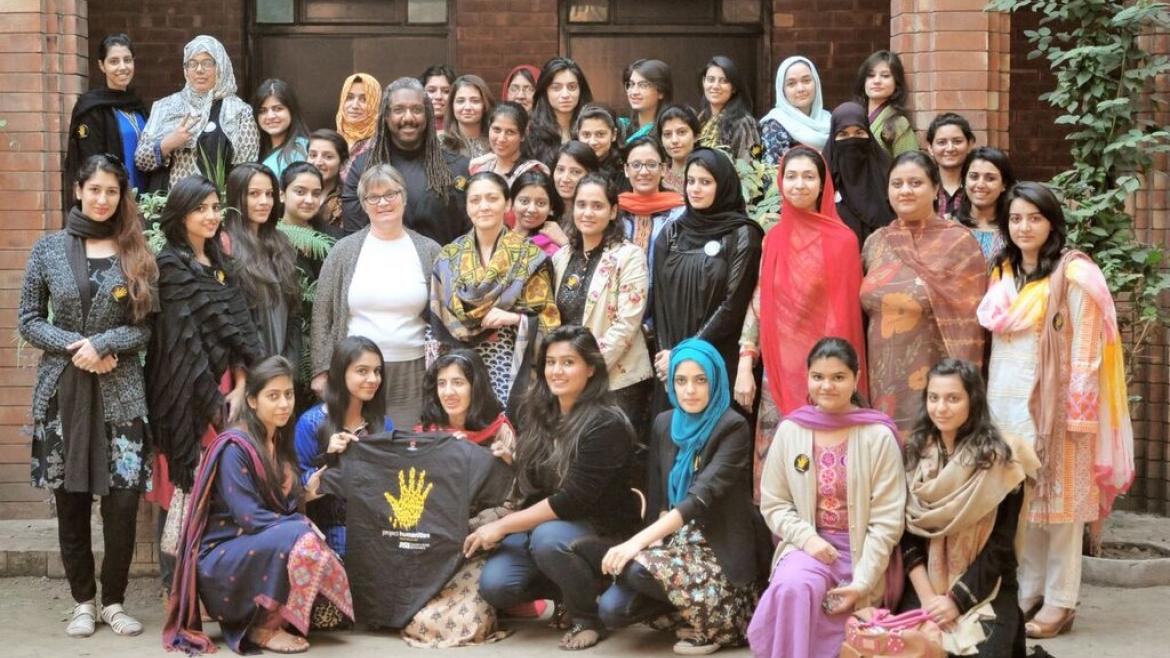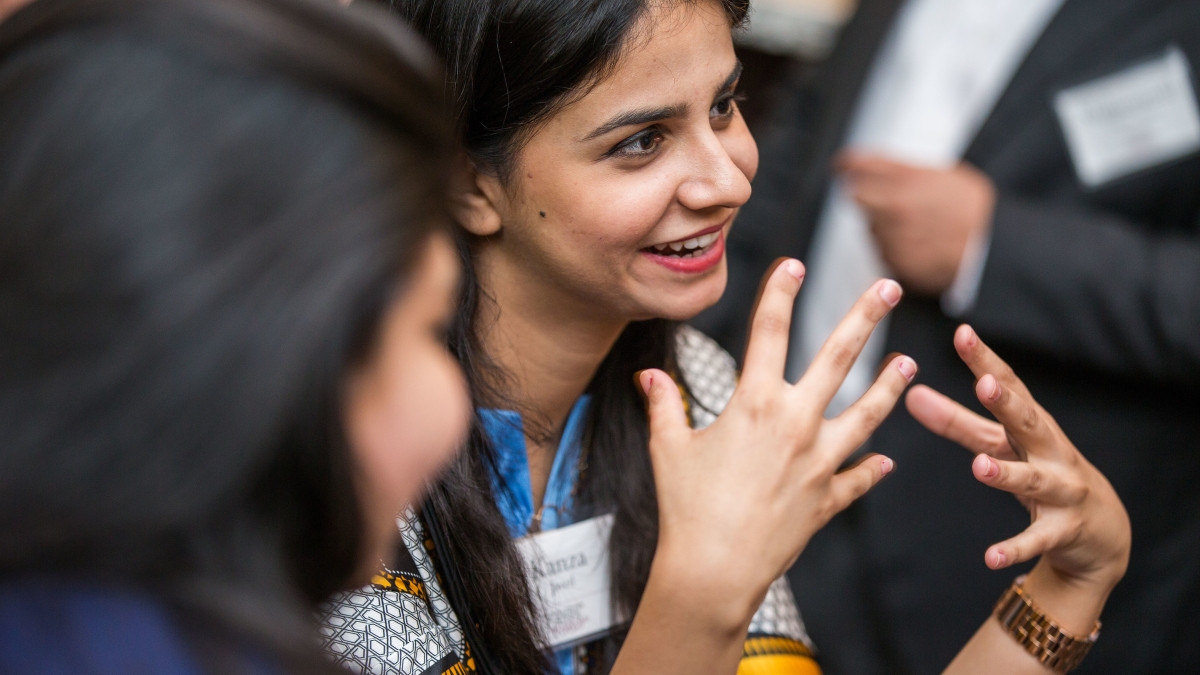Hands go up in a crowded ASU lecture hall when a social justice course instructor asks who has ever experienced prejudice. The instructor asks another question: Are any of you willing to share that experience?
The hands start going down. One girl, toward the front, keeps hers raised. The instructor gestures for her to speak, and the room gets quiet. The student tells how she no longer feels comfortable wearing her hijab on campus because of the negative comments and looks it elicits from people.
That was in 2007.
Nearly a decade later, American perceptions of Muslims have arguably become even more adverse due to factors like the rise of militant extremist groups, such as ISIS, who commit mass global terror attacks, allegedly in the name of Islam.
At the same time, the Muslim world’s perception of the Western world has become increasingly circumspect due various factors, such as American military presence in Middle Eastern countries where Islam is largely practiced.
“When I went [to Pakistan] in the 1990s, I couldn’t walk down the street without people saying, ‘You’re American? Come in for tea,’ ” Chad Haines said. “In 2009 when I went as a Fulbright Fellow it was a different story.”
Haines, assistant professor in the School of Historical, Philosophical and Religious Studies at Arizona State University, serves as the principal investigator for one of two academic exchange programs between ASU and universities in Pakistan.
The first, which began in the fall of 2014, is an exchange between ASU’s Department of EnglishThe School of Historical, Philosophical and Religious Studies and the Department of English are units of ASU's College of Liberal Arts and Sciences. and Kinnaird College for Women. The second, launched in the fall of 2015, is an exchange between ASU's Walter Cronkite School of Journalism and Mass Communication, ASU's College of Liberal Arts and Sciences and the University of the Punjab, involving both journalism and development studies.
The programs, each lasting three years, are made possible by two separate $1 million grants from the U.S. State Department to ASU’s Center for the Study of Religion and Conflict, which facilitates the programs. Their goal is to establish long-term, ongoing relationships and understanding between Pakistani academic institutions of higher learning and those in the United States.
That goal is achieved by the exchange of faculty members each semester, where they take seminars which teach them about U.S. teaching methods and pedagogy, have discussions about differences and similarities between cultures and even present research.
As Carolyn Forbes, assistant director of the Center for the Study of Religion and Conflict, puts it, “One of the ways you build peace is through these kinds of exchanges — creating dialogues across these cultural spaces.”
Forbes worked with each program’s team to develop the proposals for the grants. Invaluable to that process was Yasmin Saikia, an ASU professor of history who had been working with Haines and ASU English professor Neal Lester on how to implement humanities research in impactful ways.
A native of India, Saikia’s studies focus on the histories of India, Pakistan and Bangladesh.
History, she says, is simply the stories of people in places — places marked by borders on maps. And the boundaries that exist between those spaces — those countries or territories — she realized were more often than not determined by things like religion and politics. They also served to create divisions between people, even when the actual distance that separated them was very small.
Saikia points to the huge amount of conflict between neighboring countries India and Pakistan, which prompted her to wonder: “How did we get to the point where we live in a state of perpetual enmity?”

ASU-Kinnaird College for Women exchange participants in Lahore, Pakistan, in fall 2014.
Photo courtesy of Carolyn Forbes
“It’s troubling because you see that these things are made up; you realize the power of rhetoric and propaganda and bad governance,” she said. “… [The area that includes] India, Pakistan and Bangladesh is the most populated region in world, so governments wanted to control it. It’s an area where the world’s largest number of minorities are living side by side … a mosaic of world religions, and they have been living together for ages, and suddenly they have started not just being enemies, but violently disliking one another.
“It’s a very important question to ask: How did this happen and what purpose does it serve? And you see that it doesn’t serve the purpose of people.”
In response, Saikia made it her mission to “move outside of those given categories” and “start working on a different kind of history that brings people’s stories to the forefront. In doing that, you find that people are so similar.”
The exchange between ASU and Kinnaird College for Women focuses on English and American literature. Claudia Sadowski-Smith, ASU associate professor of English and principal investigator for the Kinnaird exchange, said connecting across cultural boundaries via literature is a no-brainer:
“Literature very often is engaged with thinking about identity, which might be identity in a national sense. … And literature personalizes stories of [political and global] developments that seem so systemic, so depersonalized. It humanizes a lot of these stories that we don’t always hear about, gives us perspective, counter-narratives and counter-discourses.
“In that regard, allowing us to have seminars where we talk to each other and exchange ideas is powerful.”
Nadia Anjum, head of postgraduate studies in the Department of English at Kinnaird College for Women, said that the faculty there who have been participating in the program report feeling enriched and more confident.
“Five have presented papers at international conferences, which surely is a great achievement,” Anjum said. “The research area each one took up has strengthened our program.
“And these exchange programs are mutually beneficial — academically and generally. It has given our female practitioners exposure to U.S. educational systems, research collaboration and fostering friendships. It [has given] American universities the opportunity to reach out to a larger audience and promote American studies and literature in our part of the world. Moreover, as felt and stated by the cohorts, [it gives Americans the opportunity for] ‘closer cultural ties and to see the real Pakistan (as opposed to the picture media portrays).’ ”
The exchange between ASU and University of the Punjab focuses on transdisciplinary approaches to communication and development studies.
“One of the ways you build peace is through these kinds of exchanges; creating dialogues across these cultural spaces.”
— Carolyn Forbes, assistant director of the Center for the Study of Religion and Conflict
Haines echoes Sadowski-Smith’s and Anjum’s sentiment in regards to the mutual benefit of exchanging ideas.
“The exposure itself, as far as pedagogy, will be hugely beneficial rather than traditional top-down methods they tend to use [in Pakistan]. As well the nature of how we do research and interact as community of scholars,” he said.
“For us at ASU, I think it’s significant in multiple ways. Development studies in the U.S. tend to be defined by very American-centric views of the world. [Americans] see development very quantitatively; it’s all about the numbers. And I think we fail to really appreciate the way in which different cultures and religions inform those processes.”
According to Saikia, the effects are already apparent.
“It is remarkable to me that as an individual I can feel [the effects]. These are community issues, and one can do something about them. I appreciate that U.S. Embassy and State Department have given us this opportunity to create these linkages.”
Click here to view a video about the ASU-University of Punjab exchange.
Top photo: Kanza Javed chats with attendees at a meeting hosted by the Center for the Study of Religion and Conflict at the University Club in Tempe on Nov. 2. Photo by Deanna Dent/ASU Now
More Arts, humanities and education

Local traffic boxes get a colorful makeover
A team of Arizona State University students recently helped transform bland, beige traffic boxes in Chandler into colorful works of public art. “It’s amazing,” said ASU student Sarai…

2 ASU professors, alumnus named 2025 Guggenheim Fellows
Two Arizona State University professors and a university alumnus have been named 2025 Guggenheim Fellows.Regents Professor Sir Jonathan Bate, English Professor of Practice Larissa Fasthorse and…

No argument: ASU-led project improves high school students' writing skills
Students in the freshman English class at Phoenix Trevor G. Browne High School often pop the question to teacher Rocio Rivas.No, not that one.This one:“How is this going to help me?”When Rivas…


